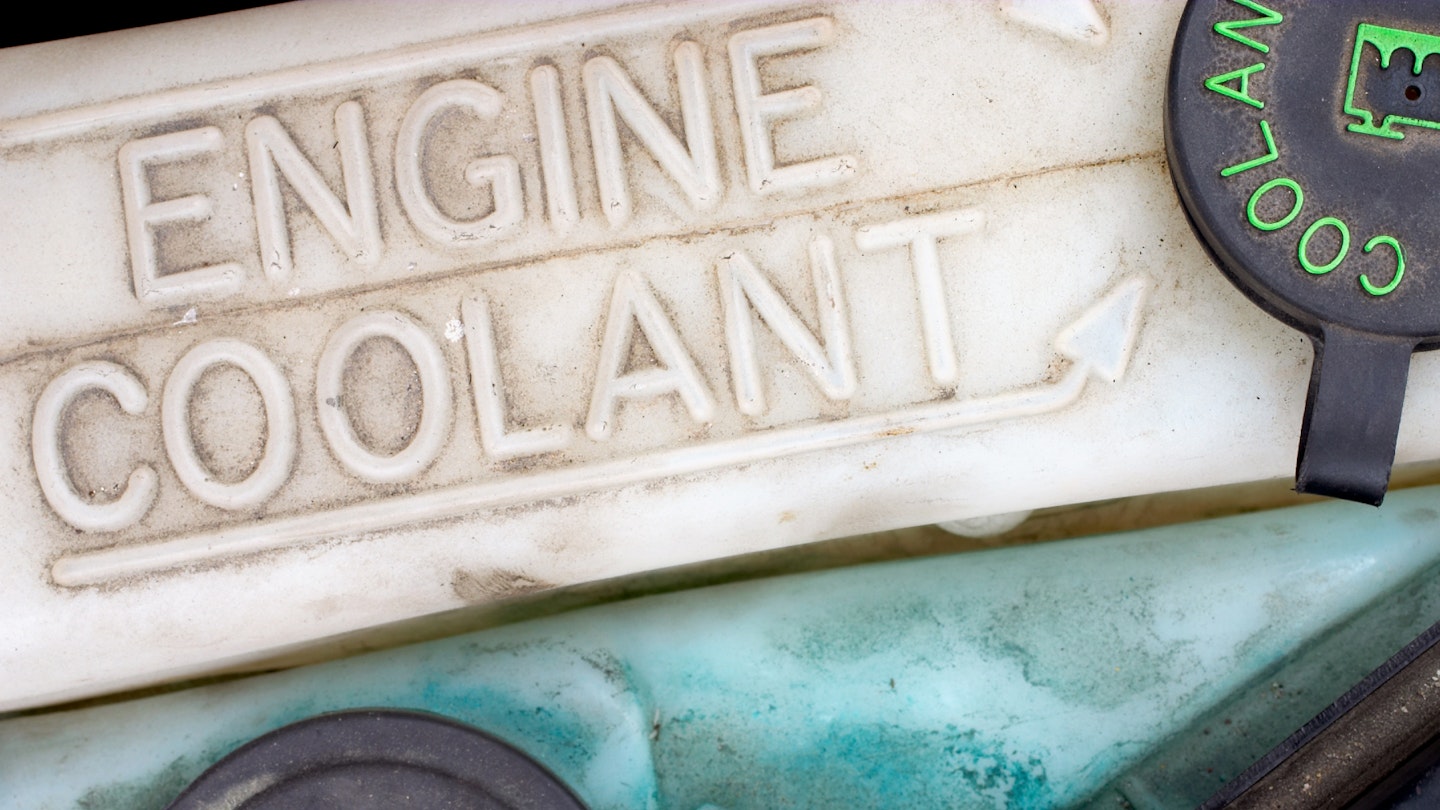There is inevitably some kind of introductory analogy I could use for the topic of coolant. Something along the lines of likening it to an ocean current that regulates the earth's temperature. But I stubbed my toe on one of the dining table legs this morning and am therefore feeling irritable and in no mood for charitable metaphors.
Analogies are often over-used anyhow and instead, I shall begin by saying if your car's coolant is low or needs replacing, your car will either be polite enough to let you know by illuminating a warning light, or it will be rude by overheating when driving somewhere unfortunate like Caracas, Tijuana, or Milton Keynes.
Below is everything you need to know about tending to your car's coolant.
What is coolant?
Coolant is a 50-50 mix of antifreeze (ethylene glycol) and water. The antifreeze prevents the water from freezing, it also prevents overheating by increasing the boiling point of the water.
Though the idea is universal, coolants aren’t. Different cars require different coolants, though it’s not difficult to find which one you need for your car, which we will get into presently. The type of coolant largely depends on a car’s age. Pre-2000 vehicles often use what’s called Inorganic Additive Technology (IAT), while later models use Organic Acid Technology (OAT) and Hybrid Organic Acid Technology.
OAT coolants improved on IAT products by offering better protection and allowed for extra mileage between changes. In individual circumstances, it pays to refer to your car’s handbook. It will tell you not only the type of coolant you need but how often it needs changing.
Buying the right coolant
There are options here. Dealerships usually stock coolant for their models and you can visit them to get more. Alternatively, there are quality aftermarket options too available for many (but not all) car models.
Whatever your choice, it’s vital to know that such products are available both as a ready-mix or and concentrate. The former can be poured straight into the reservoir. The latter requires diluting first but is much better value.
If you’re buying aftermarket coolant and you don’t have your car’s handbook, Halfords has the best coolant search by model. Simply type in your car’s registration number or model details and the correct coolants are filtered.
But as a time-saver, below are coolant options for some of the UK’s most popular vehicles, a Mk7 Ford Fiesta 1.0-litre petrol EcoBoost, a 2021 Nissan Qashqai 1.7-litre diesel, and a Fiat 500 1.2-litre petrol.
Five-litre concentrate gives you excellent value. Ideal for use if you wish to flush the cooling system.
Ready to be poured straight into the coolant reservoir.
Prestone
Contradicting what we said before about coolants not being universal, Prestone claims to have a universal coolant. It’s highly rated by many customers and comes with a 10-year guarantee for corrosion resistance. It stands as an exception and feel free to use it, though model-specific coolants are likely to be more effective.
A universal coolant for use on any model of car. It's unique in this respect and is available in a concentrate also.
When and where to top up
Coolant is not something that needs changing regularly. Check your vehicle’s manual but cars do tens of thousands of miles between coolant changes. Symptoms of low or old coolant in the system are overheating or the coolant warning light on the dashboard illuminating.
Coolant does not get poured into the radiator. It gets poured into the reservoir labelled ‘coolant’ and is connected to the radiator by a hose. When the engine is old, open the coolant reservoir and check the coolant is at the cold fill line. If it's low, it’ll need topping up. If the coolant in the reservoir is murky or gloopy you might want to consider flushing the system and filling the cooling system with fresh coolant. Remember, coolant is not just about regulating the car’s temperature, it also helps protect against engine corrosion.
Flushing the cooling system removes the buildup of deposits and particles that build up the hoses. Getting rid of this avoids the risk of damaging engine parts. Flushing can be beneficial for buyers of second-hand cars too. In addition to removing sludge buildup, you may not know what coolant is in there, and since you can’t mix different types of coolant, it may give you peace of mind to flush the system.
How to flush the cooling system
- Ensure the engine and current coolant are cold. Never flush with a warm engine.
- Made easier with a car jack, locate the radiator drainage point on the underside of the car.
- Place a receptacle beneath the drainage point and open the valve, which may require a ratchet.
- Let the coolant drain and tighten up the valve again. Pour in system flush (see below) and water into the reservoir up to the fill line.
- Run the engine for about 10 minutes and allow it to completely cool before draining the system like you did before. There will likely be plenty of gunk that comes out this time.
- Refill the system with fresh coolant.

An excellent, reliable solution that effectively cleans a radiator and cooling system.



